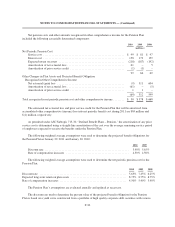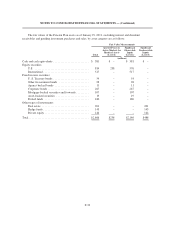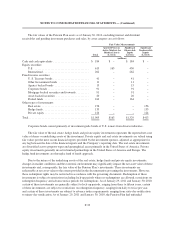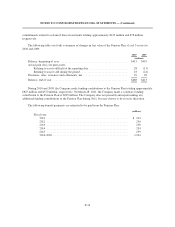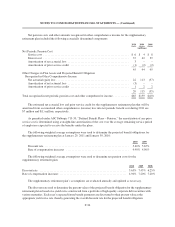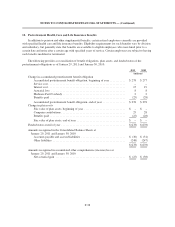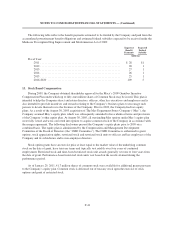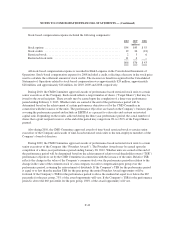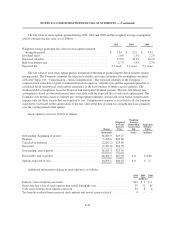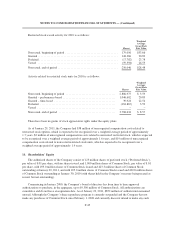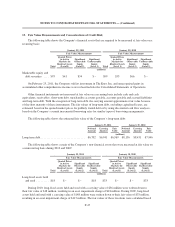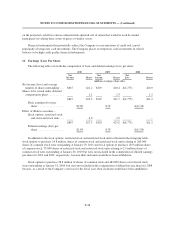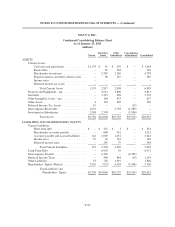Macy's 2010 Annual Report Download - page 88
Download and view the complete annual report
Please find page 88 of the 2010 Macy's annual report below. You can navigate through the pages in the report by either clicking on the pages listed below, or by using the keyword search tool below to find specific information within the annual report.
NOTES TO CONSOLIDATED FINANCIAL STATEMENTS — (Continued)
The future medical benefits provided by the Company for certain employees are based on a fixed amount
per year of service, and the accumulated postretirement benefit obligation is not affected by increases in health
care costs. However, the future medical benefits provided by the Company for certain other employees are
affected by increases in health care costs.
In March 2010, President Obama signed into law the “Patient Protection and Affordable Care Act” and the
“Health Care and Education Affordability Reconciliation Act of 2010” (the “2010 Acts”). Included among the
major provisions of these laws is a change in the tax treatment related to the Medicare Part D subsidy. The
Company’s postretirement obligations reflect estimated federal subsidies expected to be received under the
Medicare Prescription Drug, Improvement and Modernization Act of 2003. Under the 2010 Acts, the Company’s
deductions for retiree prescription drug benefits will be reduced by the amount of Medicare Part D subsidies
received beginning February 3, 2013. During 2010, the Company recorded a $4 million deferred tax expense to
reduce its deferred tax asset as a result of the elimination of the deductibility of retiree health care payments to
the extent of tax-free Medicare Part D subsidies that are received.
Based on data currently available, the Company is not able at this time to determine the ongoing impact that
the other provisions of the 2010 Acts will have on the Company-sponsored medical plans. As a result of this
legislation, the Company is evaluating the impact of the 2010 Acts on the active and retiree benefit plans offered
by the Company. The provisions of the 2010 Act did not require a re-measurement of the Company’s
postretirement obligations and did not impact the postretirement net periodic benefit costs for 2010.
The following provides the assumed health care cost trend rates related to the Company’s accumulated
postretirement benefit obligations at January 29, 2011 and January 30, 2010:
2010 2009
Health care cost trend rates assumed for next year .......... 8.38% – 10.08% 8.69% – 10.54%
Rates to which the cost trend rate is assumed to decline
(the ultimate trend rate) ............................. 5.0% 5.0%
Year that the rate reaches the ultimate trend rate ........... 2022 2022
The assumed health care cost trend rates have a significant effect on the amounts reported for the
accumulated postretirement benefit obligations. A one-percentage-point change in the assumed health care cost
trend rates would have the following effects:
1 – Percentage
Point Increase
1 – Percentage
Point Decrease
(millions)
Effect on total of service and interest cost ....................... $ 1 $ (1)
Effect on accumulated postretirement benefit obligations ........... $15 $(14)
F-40


